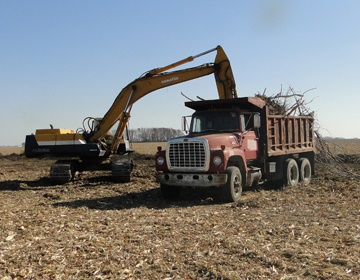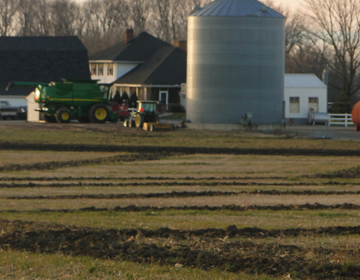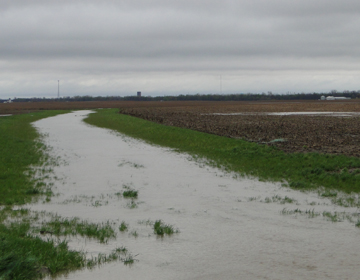
Land and Fencerow Clearing
Bryant Ag Enterprises uses our heavy equipment to clean up acres where there is a potential for agricultural use. Land clearing requires the removal of trees, shrubs and boulders from the land surface. The surface must then be tilled in order to get a workable seedbed where a crop can be seeded and produced. Bryant Ag clears the surface of existing cover while leaving the appropriate buffer zone preserved along all creeks and waterways. This is an extremely important factor in maintaining clean water supplies and habitats for fish and wildlife.

Subsurface Drainage
Bryant Ag Enterprises not only produces crops, but when not involved in the busy season we also do our own subsurface drainage or field tiling. This practice maximizes yields and lessens the chance of disease and erosion while also helping to ensure landowners that they can get the maximum benefit possible out of government conservation programs. According to research experts, the number one factor that affects crop yield is drainage. Subsurface drainage can increase crop production up to 50 percent. Drainage also boosts the effectiveness of fertilizer, reduces the risk of flooding, allows for a longer growing season, helps to avoid heavy soil erosion, and slashes downtime and labor costs.

Surface Drainage
Bryant Ag Enterprises utilizes our crop acres to the fullest by doing what is necessary to better the soil. We use grassed waterways which are broad, shallow channels designed to move surface water across farmland without causing soil erosion. The vegetative cover in the waterway slows the water flow and protects the channel surface from rill and gully erosion. Grassed waterways are often created in natural depressions where the water collects and flows to an outlet. Bryant Ag Enterprises works closely with each county’s soil and water conservation offices to properly construct each waterway so that they carry the peak runoff from large storms but also make it easy and smooth for equipment to pass over. Being properly sized, seeded and shaped, grassed waterways will transport water down slopes in fields and prevent future erosion.


